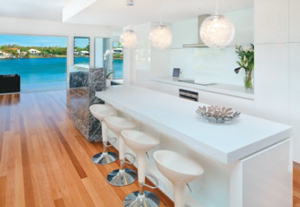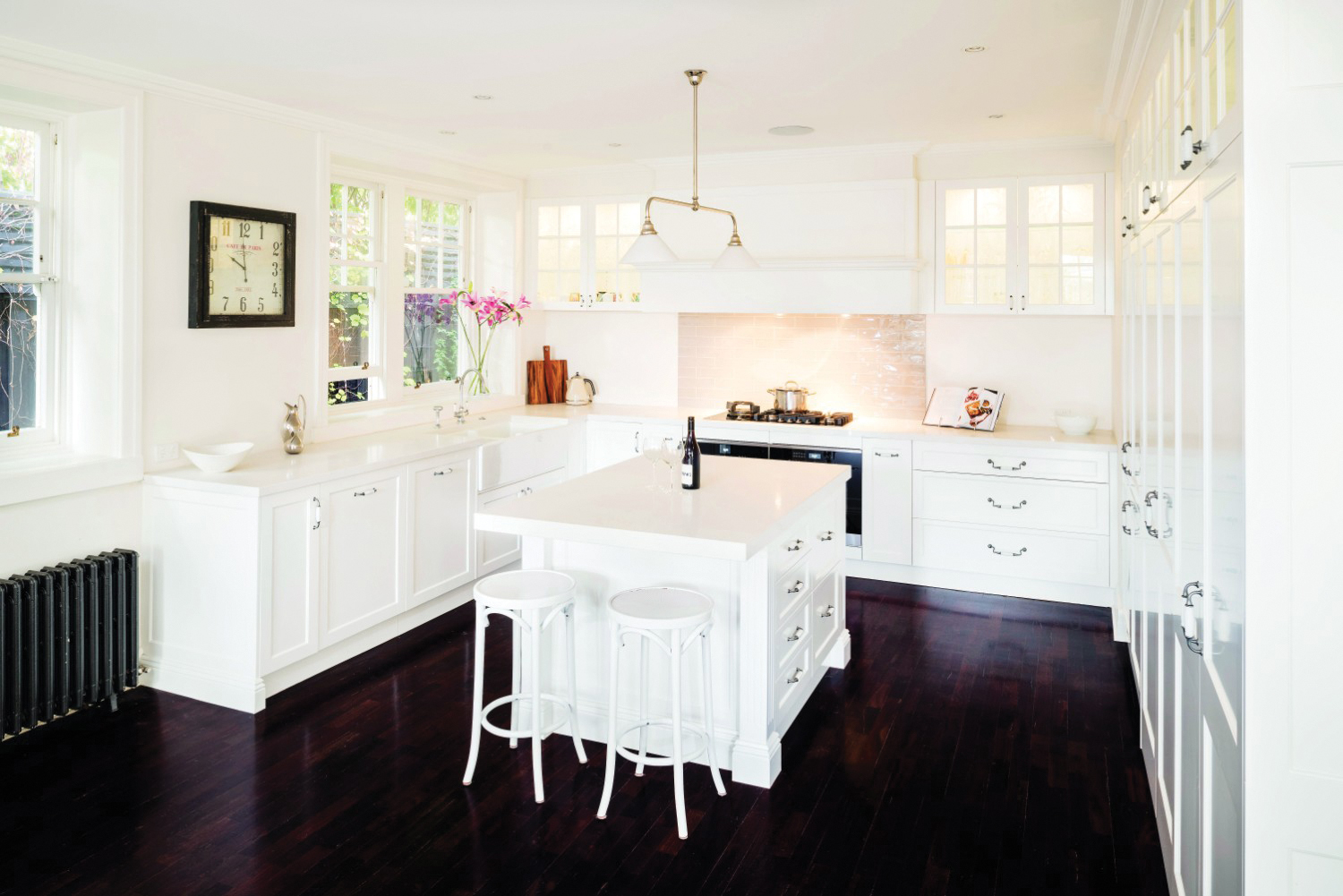Design and layout are key ingredients to ensure your gourmet kitchen is set up to suit your style of cooking and entertaining
Serious cooks need a kitchen that can keep up with the demands placed on them. So, if your aim is to create a gourmet kitchen where you can whip up culinary delights, there are some careful considerations to make. What are the latest trends? Should design and layout be top of the list or should I pick my colours first? Should I preference practicality over aesthetics? What must I have and which items are on my wish list?
To assist in answering these questions it helps to have an expert on hand. We spoke to two: Darren James from Interiors by Darren James, who is the current KBDi Certified Designer of the Year, and Marylou Paino, Interior Designer and trend forecaster.
“My first consideration when starting the design process is to find out what functions the kitchen needs to perform,” says Darren. “This involves looking further than the primary function of a kitchen and delving into the unique functions specific to you and your family. Then we can start to allocate space and workflows.”
Marylou concurs. “I like to establish the feel of the kitchen first as this then helps to connect the form to the function. It’s the emotion of the kitchen that I like to start with.”
It’s generally agreed that form and function must co-exist within any kitchen space. There is no point designing the greatest looking kitchen if the users are constantly frustrated at its lack of functionality and the reverse is also true. All designers will focus on the aesthetics of any space, but the trick is to ensure that the space includes practical elements so it can be used for maximum efficiency.
“A good design should reflect the harmonious marriage of form and function,” states Darren firmly. “I am a firm believer that form can be functional itself. For example, split-level benchtops create ergonomic benchtop heights based on the activity being performed — its function — but also creates a visual dimension to the design — its form).”
“The best kitchens are obviously a quiet balance of the two,” adds Marylou. “Function — how it works — supports the form — how it looks — and vice versa”.
If you are serious about your cooking and wish to spend plenty of time in the kitchen preparing treats for family and friends, it’s essential the inclusions meet your needs. Darren says there are three “must haves” when it comes to designing a cooking-focussed space: professional equipment, durability of materials and an expertly arranged food preparation area/zone.
His experience is that many clients who are serious foodies are demanding all the bells and whistles and Darren’s attitude is “why not?” but he does have a few tips on how to ensure the correct elements are chosen for inclusion.
“Appliances should be practical and incorporate a warming drawer. Adjustable racks are ideal for a cook who prepares many dishes at once,” he advises. “A large ducted rangehood and large refrigerator are essential as are large, deep multiple sinks with tap/mixer and pull-out spray.”
Darren also feels that it’s important to consider the choice of materials in order to create a truly gourmet kitchen. “Stainless steel is often the material of choice because it’s heat-resistant, hygienic and easy to maintain,” he says. “Also investigate specific drawers that can be designed to hold knives, trays, cooking utensils and spices.”
Marylou knows about staying sane in the kitchen and she has her own list of essentials for a client who is a serious cook. “Lots of bench space to spread out,” she states. “And ample storage that provides a place for everything and helps you get organised. I love the idea of incorporating a living kitchen garden to keep fresh produce close at hand.”
One of the first elements most people think of when beginning a kitchen renovation is the shape and layout. Most experts agree this is an integral element of the success of the final design.
Kitchens generally come in a number of set shapes, depending on the room layout. Even with items personalised, the main area of the kitchen will form one of several main shapes. A U-shape is where the cabinets form an unbroken U shape, generally along either two walls plus an open bench or along three walls. A G-shape is similar to a U-shape but with an extra tail from the third arm of the kitchen. A galley kitchen consists of two parallel lengths of cabinetry, generally along two walls. An L-shaped kitchen has one length of cabinets, normally running along one wall, with a perpendicular length of cabinets either running along another wall or open to the room.
Additional to any of these shapes is the introduction of a freestanding island bench. To a certain extent, the shape you choose for your kitchen will be dependent on the space you have available, where your walls are located, and the proximity of adjoining spaces.
The other main areas to consider are the size and make-up of your family, what type of cooking you generally undertake and how you wish to use the space. Talking these elements over with your designer is a great way to start the process and will give them plenty of information about your individual needs so they can tailor a solution to suit you and your family.
“Layout is critical when designing any kitchen, but particularly so if you are looking to create a gourmet space,” says Darren. “The layout needs to be designed with each stage of the cooking process in mind and this is often specific to the user as every cook has their own unique processes.”
Another aspect to consider is the changing focus of the kitchen space as we segue from the room at the back of the house that was never seen to a room that is generally considered the heart of the home and the centre of much social activity.
“A passionate cook puts their heart and soul into their cooking so it’s only just that they be positioned in the heart of the kitchen,” Marylou says. “I like a space to be concentric so that the cook can be in the centre of all activity, whether it’s preparation, washing-up, cooking etc… I believe the cook should face forward most of the time. It’s their show, their stage, after all!”
In terms of special layout or positioning of items to suit a serious home cook, Marylou knows exactly what to include. “I prefer a long wall of tall storage behind with either cavity sliders or co-planer sliders that can stay open for clear access when working,” she says emphatically. “The island would house the cooking and sink with ample (and I mean, lots) of bench space on either side and in between.”
Darren feels that a true gourmet kitchen is a multi-tasking space and it’s important that a variety of operations can be carried out simultaneously to ensure it functions at optimal levels. “Space planning, workflows and adequate bench space for prep and plating up are essential,” he firmly states. “And it’s also important to consider other factors, such as seating in the kitchen for guests and ease of cleaning up after a meal.”
Whether you are a serious cook or simply love to entertain family and friends in your home, the kitchen layout and design must be considered an essential element to ensure the space works perfectly, every time.





